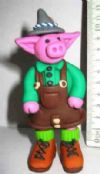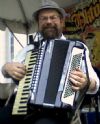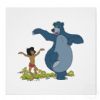|
ESL Forum:
Techniques and methods
in Language Teaching
Games, activities
and teaching ideas
Grammar and
Linguistics
Teaching material
Concerning
worksheets
Concerning
powerpoints
Concerning online
exercises
Make suggestions,
report errors
Ask for help
Message board
|
ESL forum >
Grammar and Linguistics > Using nouns as adjectives vs. using a possessive
Using nouns as adjectives vs. using a possessive
|

FrauSue

|
Using nouns as adjectives vs. using a possessive
|
|
I have just had a really frustrating lesson with an adult learner where I have had to answer most of his questions with "It´s just like that" or "I don�t really know." I hope someone here can help me! Why do we not use women�s / men�s / children�s without the possessive �s when describing a category of things? For example: women�s clothes, men�s clothes, children�s clothes. We can say baby clothes, toddler clothes, however. Why? Why can we say "a child seat" for a car, but not "a child bedroom" because we have to say "a child�s bedroom"? We can say "a man bag" or "women problems" but I couldn�t think of any other examples. When describing hats (bear with me - our lesson covered a lot of weird topics), I would say "a sun hat" meaning a hat to wear in the sun, "a dog hat" meaning a hat for a dog, or possibly a hat with a picture of a dog on it, but I would say "a train driver�s hat" meaning a hat like one a train driver would wear. Is that because the train driver is a human, so the rules are different? And what about "a sailor hat" which is acceptable? In that case, why can I say "a popstar haircut" or "old lady hair" to describe someone�s hairstyle? And I can say "You wear old lady clothes" to be a bit rude to someone and describe the category of clothing, but not "I am going to buy lady clothes," because I need �s in that case. All help is welcome - I am really struggling to explain this rule. Grammar books don�t seem to be specific enough.
|
8 Dec 2020
|
|
|
|

maryse pey�

|
|
Hi my French colleague, I will try to explain : When you say "child seat" you mean "this is a seat designed only for children so they are to be used only by children". CHILD is like an adjective and qualifies SEAT. When you say "the child�s toy" you mean "this toy belongs to this child". So the child owns one�s toy. A "sun hat" means "a hat with the only purpose to protect from the sun". SUN qualifies the characteristic of the HAT. A "popstar cut" means "your hair is cut like if you were a popstar". You are not a popstar and your hair is not a popstar�s hair, it is your hair... So POPSTAR in "popstar cut" qualifies the way you made your hair cut. whereas "The popstar�s cut is outsantding" means that "the way the popstar made their cut is outstanding". The popstar made THEIR hair cut, not yours. I hope these examples may help to explain the difference.
|
8 Dec 2020
|
|
|

karagozian

|
|
An outstanding explanation. THANK YOU VERY MUCH. |
8 Dec 2020
|
|
|
|
|

yanogator

|
|
FrauSue, I have a partial answer for you. I don�t think there is a completely satisfying answer to your question, but I will be happy to hear it if there is one. Actually, we can say man clothes, woman clothes, child clothes, but the meaning is more specific. If I come to your house wearing a lace teddy (which I can assure you I won�t ever do), you can say to me, "Bruce, go home and put on some men�s clothes", as you know, but you could also say, "Bruce, go home and put on some man clothes." We can use "man clothes" as more than a simple identifier; it is making a contrast between "man clothes" and "non-man clothes". So, "men�s clothes" is a category. "I am shopping for men�s clothes, so I won�t bother with that store, which sells only ladies� clothes." But "man clothes" can be used in a situation where there is a need to differentiate between two kinds of clothes. If a boy sees another boy wearing a shirt with frills on it (even if it is actually a boys� shirt), he might say, "You�re wearing girl clothes." I hope this helps some. It might be true only in the US, too. Bruce |
8 Dec 2020
|
|
|

douglas

|
|
I did NOT need that mental picture Bruce..LOL Have a nice day all! |
9 Dec 2020
|
|
|

cunliffe

|
Speak for yourself, Douglas, that image has put a huge smile on my face.   Excellent clarifications from Maryse and Bruce, btw. Lynne |
9 Dec 2020
|
|
|

FrauSue

|
I knew you would be able to help me out! Although I wasn�t expecting to be confronted with certain mental images this early in the morning...  Certain distinctions are clear: purpose vs possession as Maryse set out so clearly above. Certain are a little more a question of nuance: men�s clothes (clothes for men) vs man clothes (a style or category of clothing) Which leaves me still struggling with a train driver�s hat vs a sailor hat - do we just say that this is a question of usage and what sounds better to native ears? |
9 Dec 2020
|
|
|

spinney

|
|
I think if they are at a high level, then go into it. I did a worksheet on attributive nouns for one student because she kept saying things such as "dog�s food" and "bedroom�s door." I gave her the spiel about using a possessive for people in general usage and using nouns (normally in the singular) for things. But you are right, there is no concrete answer and the apostrophe is under constant threat, nowadays. See the articles below, but they won�t be much help. The "its-just-like-that" tactic has got me out of tight corners in the past, and I would highly recommend it in this case. As an afterthought, I went to a school that was called "The Queen�s Boys� School." One year, during the 60s, the school decided to replace the sign next to the entrance. The sign came back written as "The Queens� Boy�s School" much to the amusement of the teachers. The headmaster kept a photo and liked to get it out and show the students during the presentation on open days.
|
9 Dec 2020
|
|
|

TeacherARG

|
|
If I may, I�d like to add another "quick fix". It�s the noun+noun pattern in English, which for non native speakers, is hard to grasp. What has helped me finally get it, in most cases I might say, is to think of Categories: country music vs a country�s music home address vs Peter�s address school students vs a school�s students Does that help? |
9 Dec 2020
|
|
|

FrauSue

|
|
Thank you all, especially Spinney for the first article you linked to. I will send it to my learner! |
9 Dec 2020
|
|
1
2
Next >
|

















